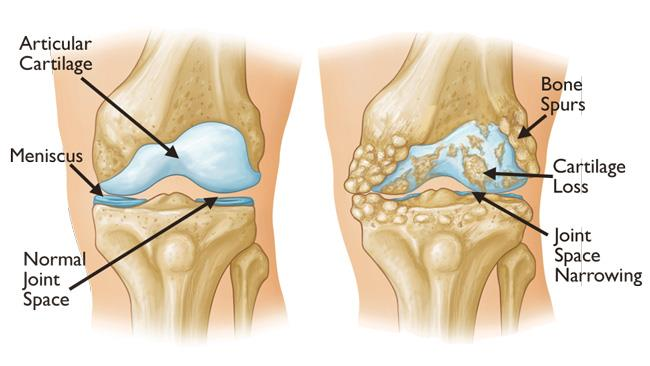A nurse is educating a client who has osteoarthritis of the knee. Which of the following explanations should the nurse give to the client as part of the disease process?
Damage to cartilage and bone can progressively worsen.
Organ failure in later stages may occur without treatment.
Inflammation will resolve over time.
There will be periods of flare-ups and remission of symptoms.
The Correct Answer is A
Choice A reason: Damage to cartilage and bone can progressively worsen. This is a characteristic of osteoarthritis. The disease is a degenerative joint disease that results in the loss of cartilage, which cushions the ends of bones in joints. As the disease progresses, the cartilage becomes thinner and may wear away entirely, causing the bones to rub against each other. This can result in pain, stiffness, and loss of joint movement.
Choice B reason:
Organ failure in later stages may occur without treatment. This statement is not typically associated with osteoarthritis. While osteoarthritis can significantly impact a person's quality of life, it does not directly cause organ failure. However, it's important to manage osteoarthritis effectively to maintain overall health and prevent secondary complications.
Choice C reason:
Inflammation will resolve over time. This is not typically true for osteoarthritis. While some people with osteoarthritis may experience periods of reduced symptoms, the underlying disease process does not resolve over time. In fact, osteoarthritis usually worsens over time.
Choice D reason:
There will be periods of flare-ups and remission of symptoms. This is true for many people with osteoarthritis. Symptoms can vary and may become more severe during periods of activity or stress on the joint. Conversely, symptoms may decrease during periods of rest or with effective management strategies.

Nursing Test Bank
Naxlex Comprehensive Predictor Exams
Related Questions
Correct Answer is D
Explanation
Choice A reason:
Ecchymosis, or bruising, of the surrounding skin is a common finding associated with fractures due to the trauma to blood vessels in the area. While it can indicate bleeding or injury, ecchymosis itself does not specifically indicate impaired venous return.
Choice B reason:
Acute pain is a typical symptom following a fracture and results from the injury to the bone and surrounding tissues. Pain is an expected finding and does not directly suggest an issue with venous return.
Choice C reason:
A bounding distal pulse may actually suggest increased arterial flow or could be a sign of other conditions such as high blood pressure or fever. It does not indicate impaired venous return, which is typically characterized by a lack of pulse or a very weak pulse.
Choice D reason:
Increasing edema, or swelling, in the affected arm is a sign of impaired venous return. When veins are unable to effectively return blood to the heart, fluid can accumulate in the tissues, leading to edema. In the context of a fracture, this could be due to compression or damage to the veins, which can impede blood flow and result in swelling.
Correct Answer is B
Explanation
Choice A reason:
Bowel sounds are an important assessment to determine the return of gastrointestinal function after surgery. However, they are not the immediate priority following a cholecystectomy. The nurse will monitor bowel sounds to assess for ileus or obstruction, but this comes after ensuring that the patient's vital signs are stable.
Choice B reason:
Oxygen saturation is the priority assessment for a client being admitted from the PACU following a cholecystectomy. Ensuring adequate oxygenation is crucial after anesthesia, as respiratory function can be compromised. Monitoring oxygen saturation helps to detect hypoxemia early and prevent respiratory complications.
Choice C reason:
Inspecting the surgical dressing is necessary to check for signs of bleeding or infection at the surgical site. However, this is not the first priority upon admission from the PACU. The nurse will assess the dressing after vital signs and oxygen saturation have been addressed.
Choice D reason:
Temperature is an important vital sign that can indicate infection or other postoperative complications. However, the immediate priority is to ensure the client's airway and breathing are adequate, which includes assessing oxygen saturation before temperature.
Whether you are a student looking to ace your exams or a practicing nurse seeking to enhance your expertise , our nursing education contents will empower you with the confidence and competence to make a difference in the lives of patients and become a respected leader in the healthcare field.
Visit Naxlex, invest in your future and unlock endless possibilities with our unparalleled nursing education contents today
Report Wrong Answer on the Current Question
Do you disagree with the answer? If yes, what is your expected answer? Explain.
Kindly be descriptive with the issue you are facing.
